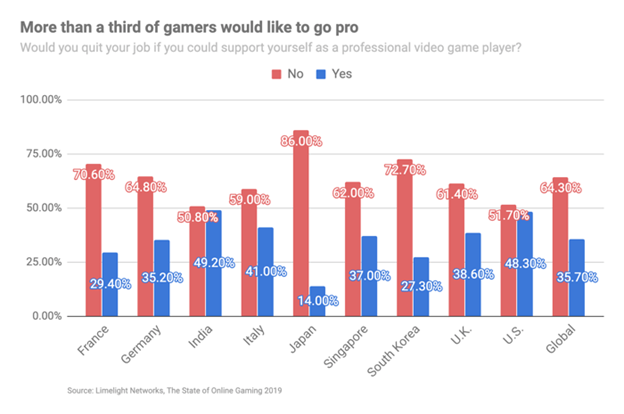
The Billion-Dollar Realm of Esports: A Deep Dive
The esports industry is in a rapid growth phase. Gone are the days when playing video games merely offered modest winnings at a friend’s gathering or a local gaming café. The gaming industry landscape has transformed dramatically, paving the way for gamers to convert their skills into prosperous business avenues.
Icons of the gaming world such as Roosterteeth, PewDiePie, Ninja, and Shroud have garnered massive attention, thanks to platforms like YouTube and Twitch. Meanwhile, professional gamers like KuroKy and Sumail have bagged hefty amounts from tournament victories.
The combination of innovative game development and players’ dedication has propelled the success of Esports.
Understanding Esports
At its core, Esports, which stands for electronic sports, is a competitive arena where professional gamers either individually or in teams, vie for supremacy. These competitions are typically multiplayer, culminating in cash prize awards.
The Esports tournaments have diversified, encompassing:
- First-person shooter events like Call of Duty and Halo.
- Multiplayer online battle arena challenges such as Dota 2.
- Fighter game face-offs, including Mortal Kombat.
- Sports simulations like NBA2K.
- Plus, niche events involve card games and strategic plays.
The Evolutionary Timeline of the Esports Industry
The inception of Esports dates back to 1972, with a Space Invaders Championship that saw 10,000 participants. The late 90s saw a breakthrough with the Starcraft 2 tournament, which raked in a whopping 50 million online viewers, a significant chunk from Twitch.
The 21st century brought an avalanche of momentum for Esports. Prominent tournament hosts like the World Cyber Games and Major League Gaming emerged. Presently, the Esports prize pool is richer than ever, with events like the 2019 Dota 2 International and Fortnite World Cup boasting over $30 million in rewards.
As a matter of fact, Epic Games – the creator of Unreal Engine powering titles like Gears of War and Infinity Blade – earmarked an unprecedented $100 million for the 2019 Fortnite World Cup.
Professional Fortnite gamer Kyle “Bugha” Giersdorf, only 16-years-old, won $3 million at the most recent tournament, making it the largest cash grab by a solo player in the history of Esports.
The rise of Esports, however, isn’t some random phenomenon. Let’s dive deeper to see why the market is exploding.
Decoding the Esports Phenomenon
In 2019, the Esports industry breached the billion-dollar barrier. A substantial portion of this revenue is driven by sponsors such as Red Bull, T-Mobile, and Audi.
Esports’ exponential growth can be attributed to a shift from traditional media. Modern gamers, especially those aged 18-25, prefer watching others play online rather than tuning into regular sports broadcasts.
As a matter of fact, gamers ages 18-25 spend 77 percent more time watching other people playing online than watching broadcast sports.
The Esports Audience Landscape
Esports owes its meteoric rise to its passionate viewers. The current count stands at approximately 450 million, and it’s poised to grow. Notably, the Asia-Pacific region contributes a staggering 57% of Esports enthusiasts.
Diversity is also creeping into the traditionally male-dominated Esports viewership, with women constituting over 30% of the audience, marking a significant increase from past years.
With the rise of Esports comes an inspired generation of gamers, and some unique opportunities for video game publishers and developers. The latest research shows us that more than one-third of gamers worldwide would quit their jobs today if they could pursue a full-time career in professional gaming.
The Competitive Arena of Esports
Becoming an Esports professional is a grueling journey, akin to traditional sports. The competitive window is narrow, with players peaking in their early twenties. As Guillaume Patry, a former Starcraft pro, points out, even a few years can make a difference in this high-octane world.
“The young players are always the best players,” he said. “It’s very competitive and just being a few years older, it slows you down.”Patry is spot-on with his comment. Most aspiring professionals begin their careers in their mid-teen years and peak in their early-to-mid-20s. Statista points out the average age of North American Esports players ranges from 24 to 27.
Moreover, the commitment to the game is paramount. Many professionals, like the Fortnite prodigy “Bugha”, devote up to 10 hours daily to practice.
The Technological Edge in Esports
Cutting-edge technology is now an integral part of Esports. Teams are leveraging data analytics and machine learning to optimize their strategies. For instance, Team Liquid, a leading Dota 2 team, collaborates with SAP for predictive analytics, enhancing their gameplay.
Many gaming enterprises are rendering gameplay data public, enabling gamers to analyze and refine their strategies.
In Conclusion
Esports, having crossed the billion-dollar threshold, is on an upward trajectory. With emerging technologies and a passionate new generation of gamers, the industry’s future looks brighter than ever. Opportunities are vast, not only for players but also for software vendors aiming to tap into this burgeoning market. Esports is not just a game; it’s a revolution!





Get Social